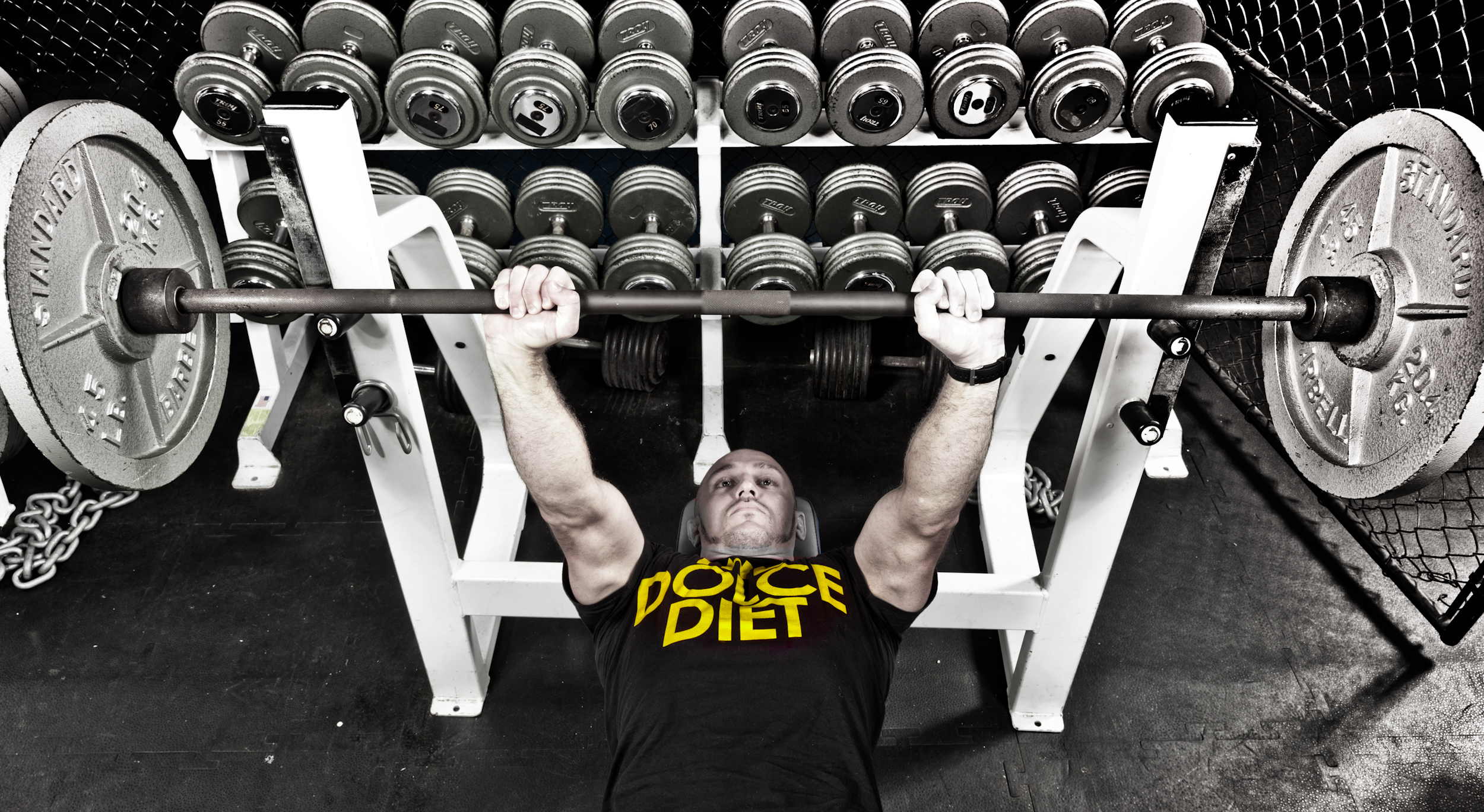Above all else, strength development depends on your ability to identify and build upon your weaknesses. While it’s obviously more fun to focus on the things you’re already good at, if you don’t spend time bringing up your weak points you’ll never achieve your maximum strength potential. In the words of Louie Simmons, “you’re only as strong as your weakest link.”
>>> Close Grip Bench Press [How to]
>>> Incline Bench Press [How to]
>>> Decline Bench Press [How to]
In this series we’re going to present you with an arsenal of information to help identify your weaknesses and develop an action plan to build them into strengths. In addition to addressing common technique and programming related errors, we’ll outline proven methods designed to increase your strength in the bench press, chin-up, squat, and deadlift.
The Bench Press
Everyone wants a bigger bench. Powerlifters, bodybuilders, casual fitness enthusiasts…we all want a bigger bench and we want it now.
To build a bigger bench, the first thing we need to do is identify the most commonly made errors. Afterward, I’ll expand upon these errors and outline several methods to improve Bench Press performance.
3 Common Bench Press Errors
1. Moving the Feet
Plant your feet firmly on the ground. They should not be moving and they definitely should not be resting on top of the bench. Drive through your heels and into the ground as hard as possible throughout the entirety of the lift. This will create a great deal of tension from your feet all the way to your upper back and allow you to generate more force into the bar.
2. Not Packing Your Shoulders
When un-racking the bar, squeeze your shoulder blades together and force your shoulders down/away from your ears. Maintain this position throughout the entirety of the lift while making a concerted effort to keep your shoulders from shifting upward. Doing so will not only improve your bench but also help support shoulder health and function.
3. Bending the Wrists
Grip the bar with your wrists straight up and down; do not allow them to bend. Squeeze the bar as tight as you can (as though you are trying to choke it) while maintaining a straight line from your elbows all the way to the bar. This will not only protect your wrists but also allow you to apply a greater amount of force directly into the bar, resulting in a bigger bench.
3 Methods to Improve Bench Press Performance
1. Progressively Lift Heavier Weight
If you aren’t consistently trying to lift heavier weight you will not get stronger. This doesn’t mean you need to hit a new personal record every time you Bench Press, but overtime you must challenge yourself to lift progressively heavier loads. Be patient and never sacrifice technique for extra pounds on the bar, but don’t be scared to lower the rep-scheme and add another 5-10lbs.
2. Push Yourself Away From the Bar
Rather than think about pushing the bar away from you, imagine pushing yourself away from the bar. This cue tends to reinforce proper form and technique as well as reduce total range of motion (ROM), often resulting in a bigger bench. Don’t forget to squeeze your back and force your shoulders down/away from your ears to protect your shoulders and make this cue more effective.
3. Build a Stronger Back
The back is our base of support during the Bench Press. The bigger and stronger our base of support, the more weight we will be capable of lifting. Make it a point to include a wide variety of back-specific exercises including all variations of rows, chin-ups, lat pull downs, and face pulls. Not only will building a stronger back directly contribute to a bigger bench, but it can drastically improve posture as well as shoulder health and function.
